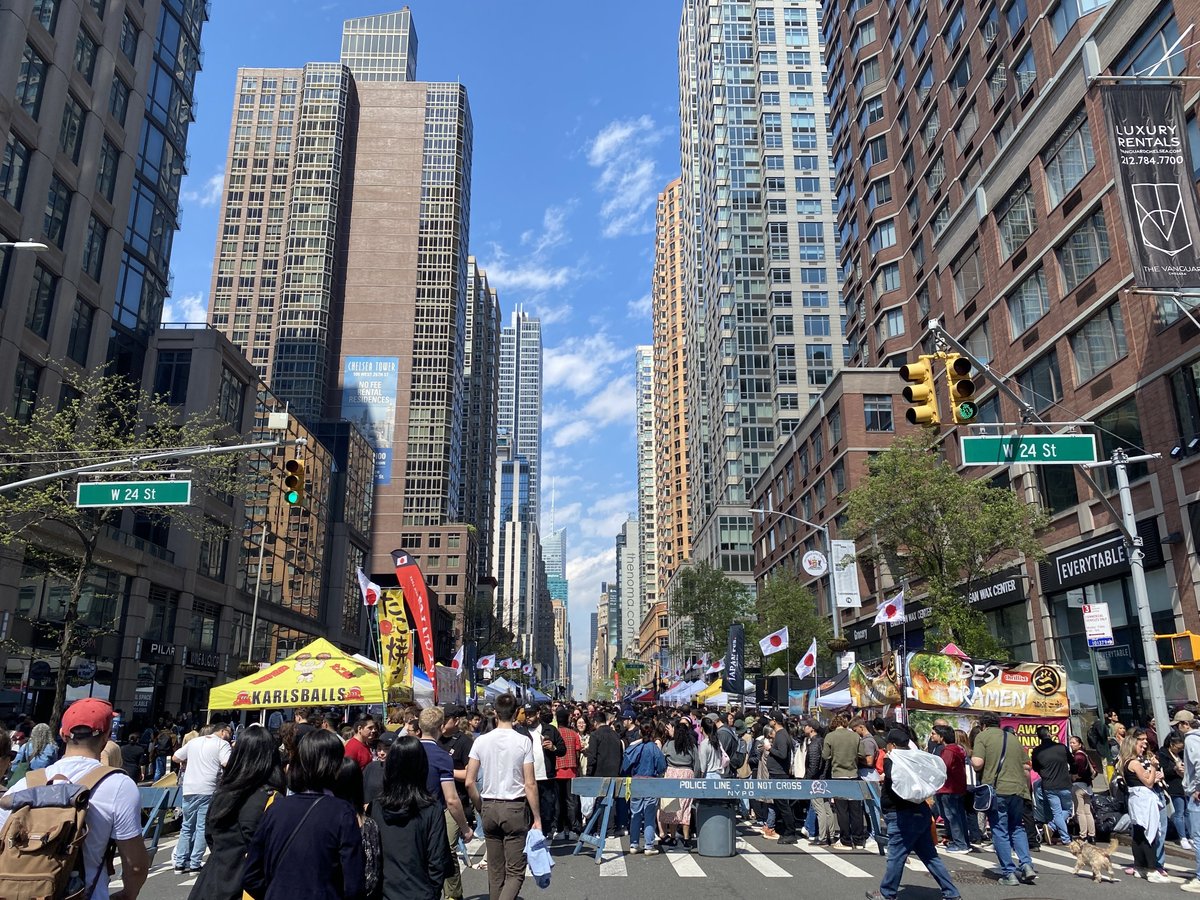
ONIGIRI Craze in NYC! Aspiration Drives Sales Why Breaking Free from Japanese Norms is Essential [AdverTimes]
This column is a full English translation of the article contributed to AdverTimes on May 28th, 2024.
Recently, ONIGIRI has been attracting significant attention in New York, much like its rising popularity in Japan. At street fairs and events in New York, it's common to see people seeking out ONIGIRI. From spring to summer, when the weather is pleasant, street fairs and events take place every weekend, featuring numerous food vendors.

Among these, Japanese food vendors are particularly bustling, with ONIGIRI being especially popular. At the Japan Fest in early April, ONIGIRI was being sold at about ten different stalls within a two-block area, each with long lines. Interestingly, most of the buyers were non-Japanese (not necessarily Americans), highlighting its broad appeal. The variety of ONIGIRI ranges from simple flavors like ume (plum) and kombu (kelp) to more elaborate versions with seasoned rice and substantial fillings.

Reflecting on its history, ONIGIRI has been sold in New York for some time but never garnered the attention that sushi did. Therefore, seeing people line up for ONIGIRI at street fairs and events this year was surprising. One catalyst for ONIGIRI's newfound popularity in New York is the influence of anime, such as "Demon Slayer" and "Jujutsu Kaisen." These anime have introduced ONIGIRI to the audience, sparking a desire to try it.
However, observing people who purchase ONIGIRI reveals mixed reactions. Some enjoy it, while others discard it after a few bites. Many struggle with the plastic packaging, which is second nature to Japanese consumers but unfamiliar to others. Some people open the packaging completely and eat only the rice, mistakenly discarding the nori (seaweed) as part of the wrapping. This indicates that a certain number of people still aren't accustomed to nori, similar to how sushi gained wider acceptance by rolling the nori inside to reduce its visual impact.
Watching these scenarios made me realize that the desire to try ONIGIRI is akin to the fascination Japanese people feel when they see food in foreign movies or TV shows and want to experience it for themselves. It’s similar to wanting to try the cupcakes from Magnolia Bakery featured in "Sex and the City" and "The Devil Wears Prada." While these cupcakes are very sweet and might be too much for Japanese tastes, the initial experience is significant. It’s the first step that leads to the next. The act of trying new food is a considerable hurdle in human choice and behavior, and the influence of anime in promoting this is powerful.
Moreover, New York is home to many health-conscious individuals, with a notable number opting for gluten-free diets. This preference for rice over wheat-based products like bread supports the ONIGIRI trend. The established popularity of seaweed salad further aids acceptance, as people familiar with seaweed recognize nori as a low-calorie, mineral-rich food. Thus, ONIGIRI is gaining interest as a convenient and healthy Japanese snack among health-conscious New Yorkers.

At last weekend's "Hypebeast Flea" event in Brooklyn, organized by the street fashion magazine "Hypebeast," ONIGIRI was available from food vendors. Unlike the casual atmosphere of street fairs, this event attracted stylish and laid-back individuals, who enjoyed ONIGIRI as part of the trendy gathering.


Regarding the price, ONIGIRI sold at street fairs typically costs over six dollars, slightly larger than those sold in Japanese convenience stores but still more expensive due to the vending environment. Despite this, the rapid sales are remarkable. Some may think, "Wouldn't it be cheaper to make it at home with delicious rice?" One company even mentioned having a pot that cooks great rice and considered selling it. However, non-Japanese consumers in New York are more interested in trying ONIGIRI than in eating delicious rice. This is a crucial point. Consequently, few people would consider making it themselves. Thus, it’s essential not to import Japanese norms directly but to understand the lifestyle, culture, and consumer needs of each city in the U.S. and adapt branding and marketing strategies accordingly.
While Japanese consumers tend to try and make things themselves, Americans prefer to pay for prepared products and services. Recognizing and leveraging this fundamental difference is critical to business success.
ONIGIRI's growing popularity in New York, with stylish people enjoying it on the go, indicates an exciting evolution of this trend. It will be fascinating to see how ONIGIRI continues to develop in New York.
